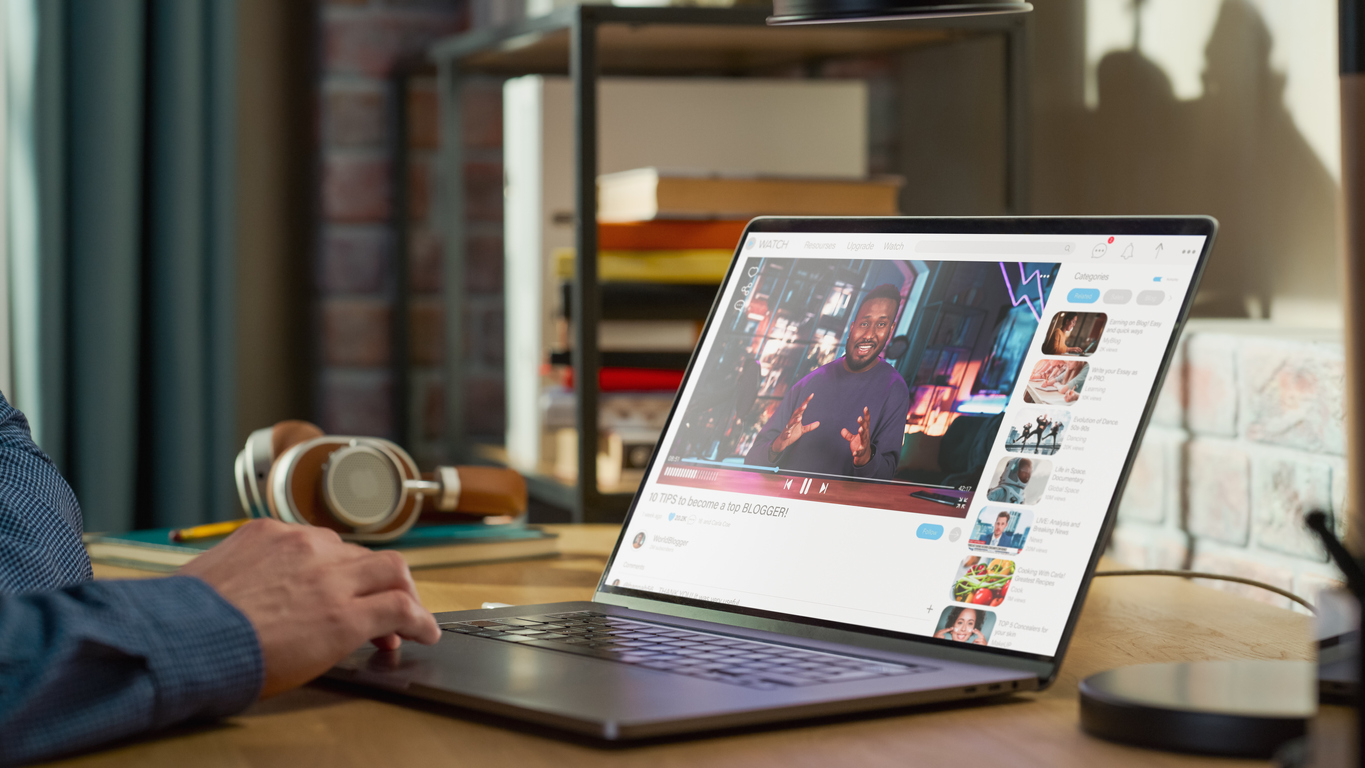- SERVICES
- HIGHER EDUCATION MARKETING
- ENGAGEMENT & ENROLLMENT MANAGEMENT
- STUDENT RECRUITMENT AGENCIES
- PROFESSIONAL EDUCATION & TRAINING
- WHO WE ARE
WHO WE ARE
Learn more about Keystone Education Group, including our leadership structure, why choose Keystone as your educational partner, and company press releases.
QUICK LINKS
- RESOURCES
RESOURCES
Find a range of helpful resources to help with your educational marketing. From on-demand webinars, reports & data, to customer testimonials and our downloadable media kit.
QUICK LINKS
- NEWS
- REQUEST A CALL

- Keystone Higher Education News
- Why YouTube Needs to be in Your Student Marketing Strategy
YouTube has grown to be the second-largest global search engine, offering universities opportunities to connect with prospective students, engage current ones, and build their online presence.
Short-form video platforms like Instagram and TikTok have rapidly become top priorities in most higher education marketing efforts – which is unsurprising considering younger generations’ ever shorter attention spans.
Still, the most traditional video platform continues to grow and demand attention in a university’s marketing strategy.
Continue reading to learn about the benefits of investing in your university’s YouTube channel and how it can help you reach more potential students.
The rise of YouTube as a search engine
Traditionally, when people think of search engines, Google comes to mind. However, how individuals search for information is changing rapidly, and YouTube is at the forefront of this shift. YouTube has evolved into a powerful search engine in its own right, with millions of users turning to the platform for entertainment as well as educational content.
YouTube is now the second-most visited website in the world, with over 14 billion monthly visits, only falling behind its parent company, Google. It is also used by 81% of all internet users. These stats demonstrate users’ growing preference for visual content – the kind that creates a more personal connection than a typical website page with written information.
Because YouTube is incorporated into Google’s own results page (SERP), relevant videos on the platform can also appear at the top of the SERP when a prospective student types a query, boosting your university’s SEO performance.
Incorporating video into your university’s marketing strategy allows you to benefit from YouTube’s massive audience, ensuring your institution is present where potential students actively seek information.
Growth in big student markets
India has recently surpassed China as the #1 source of international students, with over 1.3 million students pursuing education abroad in 2022. Coincidentally, India is also YouTube’s largest advertising audience.
As of 2022, YouTube reached 467 million users in India alone – far ahead of its runner-up, the U.S., which reached only 247 million users. The platform’s broad reach encourages universities to create content that aligns with the preferences and interests of Indian students, showcasing academic programs, campus life, and cultural integration while strengthening its recruitment efforts in one of the strongest student markets.
Hear more on social media and student marketing in our 'Social Media Best Practices for Higher Ed' webinar here
To establish a more personalized connection, universities can create content in regional languages and address concerns such as navigating the admissions process, visa requirements, and campus facilities. This type of content, which demystifies the international education journey for potential applicants, is a powerful tool for global recruitment and doesn’t limit itself to specific countries.
As mentioned, prospective students are increasingly turning to YouTube for informational content. A university’s channel containing detailed and up-to-date videos answering the most common questions among international applicants can build trust and leave a lasting first impression.
Mobile traffic dominance
Although most of YouTube’s content is watched on computers, 22% of users access the platform via mobile devices. YouTube Shorts – videos up to 60 seconds – amount to 15 billion daily views. To get the most out of your YouTube strategy, optimizing your videos for mobile consumption is paramount.
Creating short vertical videos and adding large and clear captions are the first steps in creating the ideal mobile-friendly video. Besides ensuring your content is accessible to all, appropriately captioned videos are 80% more likely to be watched to completion, according to a 2019 Verizon study.
The study also found 69% of users view videos with sound off in public places, and 25% watch them with sound off in private places, so turn off autoplay with sound and ensure your content doesn’t rely on its audio.
Building trust and academic authority
We’ve established that universities can utilize video to address prospective students’ most common questions and demystify the application and enrollment process, tearing down one of the largest obstacles for international students: lack of information. But, a clever and creative video strategy can go beyond institutional and informational content.
The role of student creators in forming a connection with future students isn’t new. Candid interviews with current students sharing their experience on campus – from classes to social life to student support – leverage authenticity and can build more trust than your typical institutional video.
Highlighting on-campus research is another often underused way of showcasing the expert faculty students – especially at the graduate level – will work closely with. Nearly every university adds “world-class faculty” to its program pages and marketing material. However, a video with a professor detailing their biggest achievements says more about the quality of education students will receive than any cliché marketing slogan.
A key player in higher education marketing
In a time when online presence is the pillar of a successful marketing strategy, YouTube should not be neglected. Its efficacy as a search engine, coupled with the increasing dominance of mobile traffic, makes it an indispensable platform for reaching and engaging with prospective students. Through compelling, worthwhile content, universities can not only stay relevant but also build a robust online presence that contributes to the overall success of a marketing plan.
More about:
Related Tags
Just For You
Top Picks
Higher Ed Chats Podcast
Listen to the latest episodes of our Higher Ed Chats Podcast - new format for 2024. Hear from Higher Ed thought-leaders from around the world!
Who Will Win The Keystone Awards?

Watch the Keystone Awards Ceremony to see the winners of the 2025 Keystone Awards!
Subscribe
to get the latest news and updates





